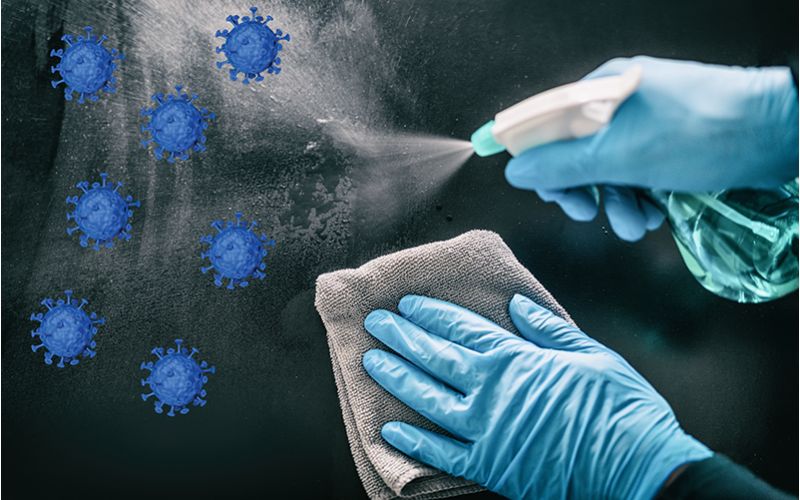
Beyond Cleaning: Mastering the Art of Disinfection
|
|
Time to read 4 min
 You are being redirected to QC Supply Pharmacy, where you’ll find a wide selection of high-quality prescription and pharmaceutical products for animals of all sizes.
Enjoy the same great service and expertise you trust from QC Supply.
Click below to continue shopping.
Continue
No thanks, stay on the main site
Powered by
You are being redirected to QC Supply Pharmacy, where you’ll find a wide selection of high-quality prescription and pharmaceutical products for animals of all sizes.
Enjoy the same great service and expertise you trust from QC Supply.
Click below to continue shopping.
Continue
No thanks, stay on the main site
Powered by


|
|
Time to read 4 min
In the wake of the novel coronavirus pandemic, businesses and homes have had to develop new standards for facility hygiene and professional cleaning services . As the world recovers, businesses need to protect staff and customers during and after reopening. Building service contractors (BSCs) and facility managers should review current practices, products, and tools. Before implementing new processes, review your hygiene standards with industry experts who can help ensure the appropriate level of surface hygiene - cleaning, sanitizing, and disinfection - is identified for each surface.
Though these words are often used interchangeably, there are important differences between cleaning services , sanitizing, and disinfecting. Cleaning removes soil from a surface but makes no specific claims about killing disease-causing organisms. Cleaning assumes that the process will remove many of the organisms on the surface, but also assumes small numbers of organisms after cleaning would be acceptable. Sanitization services kill surface bacteria to help ensure that there are very low levels of disease-causing bacteria left on surfaces but make no claims about fungi or viruses. Disinfection services have the power to kill bacteria and fungi and inactivate viruses at a much higher level than sanitizing. Sanitizing provides a 3-log reduction to bacteria and disinfecting provides a 6-log reduction , with each log being a factor of 10.
In other words, after cleaning there may be organisms left on the surface, but the surface may have an acceptable level of hygiene for certain uses. The concern is more about soil removal than eliminating a certain level of organisms. Commercial cleaning is used when there is a higher level of concern about the surface. If there were 1,000 bacteria on the surface prior to sanitizing, there would only be a few after sanitizing. For disinfecting, if there were 100,000 bacteria on the surface, there would only be a few after disinfecting.
Anytime there is visible or “gross soil” on a surface, employees must first clean before disinfecting or sanitizing. When disinfecting a surface, you can use a disinfectant to clean but must apply it twice, first to clean and then to disinfect. Using a disinfectant that has been through a standardized test method allows you to clean and disinfect in one step when there is no visible soil on the surface and when allowed by the product label. Check the label to confirm it is a one-step product for office cleaning . The same considerations also apply to sanitizing non-food contact surfaces .
Some disinfectants are also labeled to be used as sanitizers. Sanitization with disinfectants may be achieved by using a different dilution (for a concentrate), following a different contact time, or applying it on soft surfaces (if allowed by the product label). Knowing the nuances of how a certain product should be used to achieve the desired outcome is key to optimizing the performance of disinfectants in healthcare cleaning services .
When pandemics occur, organizations are under pressure to show that they are doing something different to protect patrons and employees. But different does not always mean better. For example, one Hong Kong airport is testing full-body disinfection booths at entrances. However, spraying UV disinfection solutions on hands and skin will do nothing to prevent the virus from entering the building and may cause health issues from exposure to the disinfectant.
Electrostatic disinfection is also in high demand from organizations that want to apply disinfection services to large areas at once. These devices use an electrode to atomize chemical solutions. The particles sprayed from the device have a positive charge, spreading them evenly on surfaces, making office cleaning more efficient. However, the reality is that many people are not properly disinfecting or are creating additional health risks for staff.
Consider the following potential errors and issues:
.
When choosing a disinfectant, there are a number of features to consider:
Employees need to know how to properly clean, sanitize, and disinfect surfaces, especially during and after the pandemic. When in the market for cleaning services , BSCs and facility managers should pick smart cleaning technologies that are fast-acting, effective, and less likely to cause irritation and surface damage.
Editor’s Note: This article is an updated and expanded version of Peter Teska’s article “Perfecting the Electrostatic Cleaning Process,” published on June 9, 2020, on CMMOnline.com.